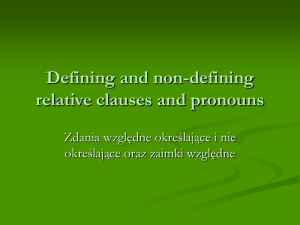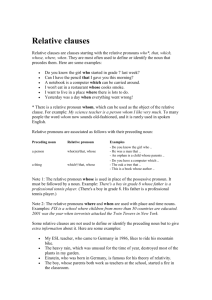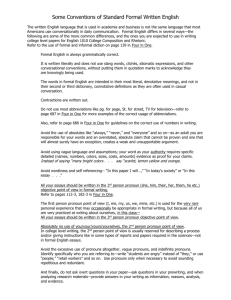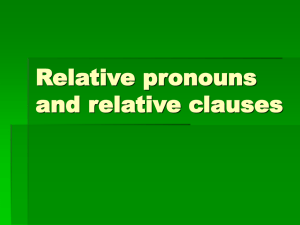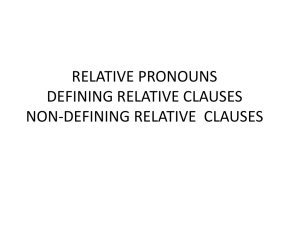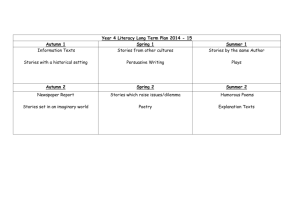File
advertisement
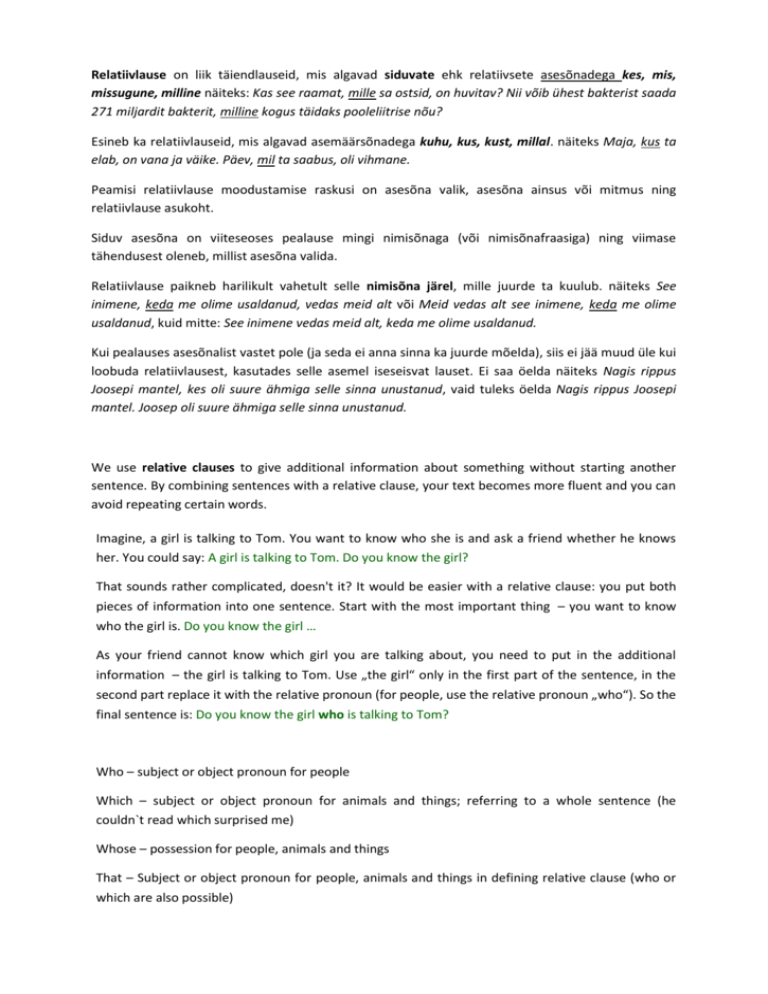
Relatiivlause on liik täiendlauseid, mis algavad siduvate ehk relatiivsete asesõnadega kes, mis, missugune, milline näiteks: Kas see raamat, mille sa ostsid, on huvitav? Nii võib ühest bakterist saada 271 miljardit bakterit, milline kogus täidaks pooleliitrise nõu? Esineb ka relatiivlauseid, mis algavad asemäärsõnadega kuhu, kus, kust, millal. näiteks Maja, kus ta elab, on vana ja väike. Päev, mil ta saabus, oli vihmane. Peamisi relatiivlause moodustamise raskusi on asesõna valik, asesõna ainsus või mitmus ning relatiivlause asukoht. Siduv asesõna on viiteseoses pealause mingi nimisõnaga (või nimisõnafraasiga) ning viimase tähendusest oleneb, millist asesõna valida. Relatiivlause paikneb harilikult vahetult selle nimisõna järel, mille juurde ta kuulub. näiteks See inimene, keda me olime usaldanud, vedas meid alt või Meid vedas alt see inimene, keda me olime usaldanud, kuid mitte: See inimene vedas meid alt, keda me olime usaldanud. Kui pealauses asesõnalist vastet pole (ja seda ei anna sinna ka juurde mõelda), siis ei jää muud üle kui loobuda relatiivlausest, kasutades selle asemel iseseisvat lauset. Ei saa öelda näiteks Nagis rippus Joosepi mantel, kes oli suure ähmiga selle sinna unustanud, vaid tuleks öelda Nagis rippus Joosepi mantel. Joosep oli suure ähmiga selle sinna unustanud. We use relative clauses to give additional information about something without starting another sentence. By combining sentences with a relative clause, your text becomes more fluent and you can avoid repeating certain words. Imagine, a girl is talking to Tom. You want to know who she is and ask a friend whether he knows her. You could say: A girl is talking to Tom. Do you know the girl? That sounds rather complicated, doesn't it? It would be easier with a relative clause: you put both pieces of information into one sentence. Start with the most important thing – you want to know who the girl is. Do you know the girl … As your friend cannot know which girl you are talking about, you need to put in the additional information – the girl is talking to Tom. Use „the girl“ only in the first part of the sentence, in the second part replace it with the relative pronoun (for people, use the relative pronoun „who“). So the final sentence is: Do you know the girl who is talking to Tom? Who – subject or object pronoun for people Which – subject or object pronoun for animals and things; referring to a whole sentence (he couldn`t read which surprised me) Whose – possession for people, animals and things That – Subject or object pronoun for people, animals and things in defining relative clause (who or which are also possible) Subject Pronoun or Object Pronoun? the subject pronouns are I, you, he, she, it, we, they, what, who. With the exception of you, it, and what, and in informal speech who the object pronouns are different: i.e. me, him, her, us, them and whom Subject and object pronouns cannot be distinguished by their forms - who, which, that are used for subject and object pronouns. You can, however, distinguish them as follows: If the relative pronoun is followed by a verb, the relative pronoun is a subject pronoun. Subject pronouns must always be used. Ex: the apple which is lying on the table If the relative pronoun is not followed by a verb (but by a noun or pronoun), the relative pronoun is an object pronoun. Object pronouns can be dropped in defining relative clauses, which are then called Contact Clauses. the apple (which) George lay on the table Relative Adverbs A relative adverb can be used instead of a relative pronoun plus preposition. This often makes the sentence easier to understand. This is the shop in which I bought my bike. → This is the shop where I bought my bike. Relative adverb Use When Time Where Place Why Reason Defining Relative Clauses Defining relative clauses (also called identifying relative clauses or restrictive relative clauses) give detailed information defining a general term or expression. Defining relative clauses are not put in commas. Imagine, Tom is in a room with five girls. One girl is talking to Tom and you ask somebody whether he knows this girl. Here the relative clause defines which of the five girls you mean. Do you know the girl who is talking to Tom? Defining relative clauses are often used in definitions. A seaman is someone who works on a ship. Object pronouns in defining relative clauses can be dropped. (Sentences with a relative clause without the relative pronoun are called Contact Clauses.) The boy (who/whom) we met yesterday is very nice. Non-Defining Relative Clauses Non-defining relative clauses (also called non-identifying relative clauses or non-restrictive relative clauses) give additional information on something, but do not define it. Non-defining relative clauses are put in commas. Imagine, Tom is in a room with only one girl. The two are talking to each other and you ask somebody whether he knows this girl. Here the relative clause is non-defining because in this situation it is obvious which girl you mean. Do you know the girl, who is talking to Tom? Note: In non-defining relative clauses, who/which may not be replaced with that. Object pronouns in non-defining relative clauses must be used. Jim, who/whom we met yesterday, is very nice. http://keeleabi.eki.ee/artiklid2/relatiivlause.html http://www.ego4u.com/en/cram-up/grammar/relative-clauses
